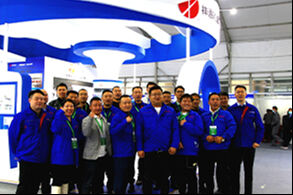
Usage
Anti-abrasive steel cord conveyor belt is suitable for heavy duty and wear environment is more severe places, such as mines, steel plants, cement plants and other heavy industry fields, as well as mining, logistics transportation, sand and aggregate production, power plants and construction sites.
In the selection, it is necessary to comprehensively consider the bearing capacity of the conveyor belt, wear resistance, working environment, material characteristics, installation and maintenance convenience and other factors.
Characteristics
1. Excellent wear resistance: it can better withstand the wear and scratch of the material and extend the service life.
2. High strength: can carry heavier loads, suitable for heavy load conditions.
3. Good stability: it can still maintain stability in high-speed operation and harsh environment.
4. Adapt to complex environment: better adaptability to temperature, humidity and other conditions.
5. Long service life: reduce the frequency of replacing the conveyor belt and reduce the cost.
Standard Specifications
| Model | Tensile Strength(N/mm) | Cord Pitch (mm) | Cord Diameter (mm) | Min Cover thickness (mm) | Width (mm) |
| ST630 | 630 | 10 | 3 | 4 | 800-2400 |
| ST800 | 800 | 10 | 3.5 | 4 | |
| ST1000 | 1000 | 12 | 4 | 4 | |
| ST1250 | 1250 | 12 | 4.5 | 4 | |
| ST1600 | 1600 | 12 | 5 | 4 | |
| ST2000 | 2000 | 12 | 6 | 4 | |
| ST2500 | 2500 | 15 | 7.2 | 5 | |
| ST3150 | 3150 | 15 | 8.1 | 5.5 | |
| ST3500 | 3500 | 15 | 8.6 | 6 | |
| ST4000 | 4000 | 15 | 8.9 | 6.5 | |
| ST4500 | 4500 | 16 | 9.7 | 7 | |
| ST5000 | 5000 | 17 | 10.9 | 7.5 | |
| ST5400 | 5400 | 17 | 11.3 | 8 | |
| ST6300 | 6300 | 19.5 | 12.8 | 10 | |
| ST7000 | 7000 | 19.5 | 13.5 | 10 | |
| ST7500 | 7500 | 21 | 15 | 10 |
Note: Cover thickness, cord diameter, and cord pitch can be manufactured according to customer’s requirements.
Cover Grades
| Grade | Tensile Strength(ISO37) Mpa | Elongation at break min. (ISO37) % | Abrasion max. (ISO4649) mm³ |
| H | 24 | 450 | 120 |
| D | 18 | 400 | 100 |
| XTO D | 18 | 400 | 50 |
The values will help to determine the appropriate cover compound for the application or for the materials carries. Reliable assessment of the behavior of the covers in service for wear and cut resistance cannot be determined from tensile strength, and abrasion values alone.